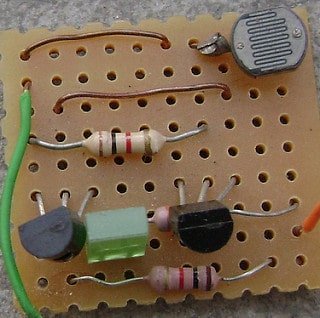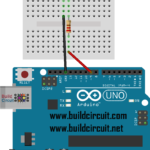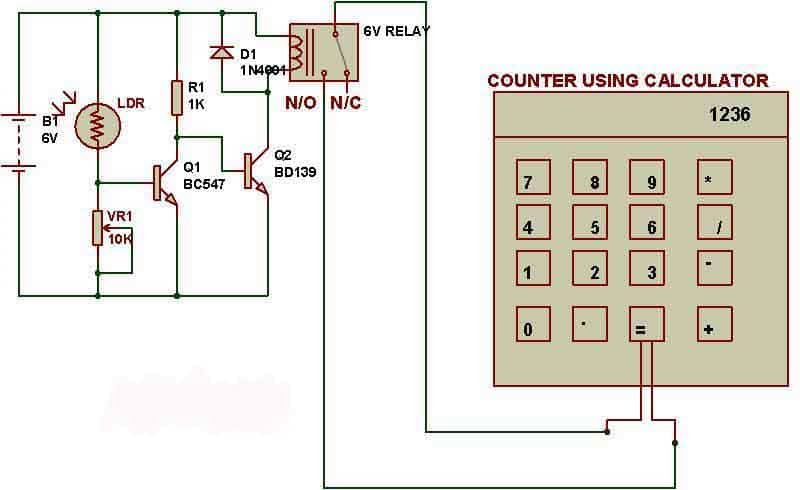
Dark sensor on breadboard
The circuit is ready for testing. Connect battery terminals and see the output. As you block light falling on LDR(Light dependent resistor), the LED glows.
OUTPUT:
[youtube]http://www.youtube.com/watch?v=qmWAgoHwy3w[/youtube]
THIS CIRCUIT IS EXTREMELY SENSITIVE TO DARKNESS. EXPERIMENT THE CIRCUIT IN A HIGHLY ILLUMINATED ROOM.
LED GLOWS EVEN IN LESS DARKNESS. Use torch light if the LED glows in less darkness. You can adjust the sensitivity of the circuit using a variable resistor in place of R3-300Ohm. Try this circuit with other resistances as well, for example, 1K, 10K and 100K, etc.








